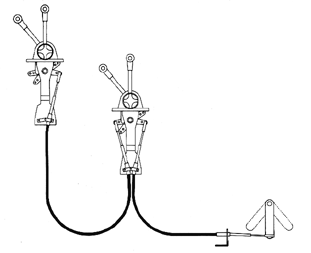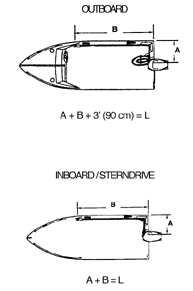|

Generally speaking there are two kinds of mechanical engine controls: dual-function
single-lever controls, and single-function controls.
- Dual-function single-lever controls operate both shift and throttle with a single lever,
the control mechanism still uses two cables, one for shift and one for throttle, but one
lever operates the two cables and controls shift and throttle.
These type of controls are available also for twin engine applications, in this case there
are two levers on the controls, but still each lever controls shift and throttle for each
individual engine.
Single lever controls have the advantage of a very instinctive action, shifting is very
quick, and they can only be shifted at low rpm, thus protecting the engine’s shift
mechanism.
If you want to check Ultraflex single-lever controls click HERE
- On single-function two-lever controls, one lever operates only the shift or only the
throttle, usually on the control there are two levers, one for the shift and one for the
throttle, but there are also single function controls with one lever, to operate only the
shift or only the throttle.
On twin engine applications, 2 two-lever single function controls will be needed.
If you want to check Ultraflex single-function controls click HERE

- In a series control system, the cables run from the upper control station to the lower
control station, then another set of control cables run from the lower station to the
engine, this system is generally recommended where the cable paths are long and/or
difficult.
While selecting a parallel or a series control system it is recommended to choose the
configuration that gives the control system the fewest degrees of bend.
The final choice is the style and type of controls. Ultraflex manufactures a broad range
of controls, allowing the boat owners to satisfy the boat’s precise needs and their
personal preferences.
DUAL STATION INSTALLATIONS
Single function control, series installation

HOW TO MEASURE FOR CONTROL CABLE
INSTALLATION
FOR NEW INSTALLATION, measure A + B distance from
the control along an unobstructed cable route to clutch and / or throttle connection.
Round this dimension off to the next whole foot: you will have your cable length.
We recommend that the cable bends have a minimum radius of about 8” (200 mm).
For outboard engine installations, it is necessary to add three feet to the obtained
length, in order to allow the engine movement.
To determine the needed length of the REPLACEMENT CABLE, measure it from tip to tip.
When ordering, specify the cable length in feet, rounding the dimension off to the next
whole foot.
|
 |
|
|